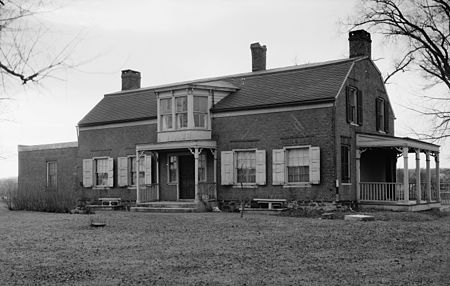Schuyler Flatts
Archaeological sites in New York (state)Colonie, New YorkHistoric American Buildings Survey in New York (state)National Historic Landmarks in New York (state)National Register of Historic Places in Albany County, New York ... and 1 more
Parks in Albany County, New York

Schuyler Flatts is an important prehistoric and historic settlement site overlooking the Hudson River in Colonie, New York. The site includes evidence of prehistoric Native American, early Dutch colonial settlement, and 18th and 19th-century American use. Because of this rich confluence of archaeological sites, the area was designated a National Historic Landmark in 1993. It is now owned by the town of Colonie, and is known as Schuyler Flatts Cultural Park.
Excerpt from the Wikipedia article Schuyler Flatts (License: CC BY-SA 3.0, Authors, Images).Schuyler Flatts
Schuyler Flatts Trail,
Geographical coordinates (GPS) Address Nearby Places Show on map
Geographical coordinates (GPS)
| Latitude | Longitude |
|---|---|
| N 42.706388888889 ° | E -73.708055555556 ° |
Address
Colonel Phillipus Schuyler House Foundations
Schuyler Flatts Trail
12189
New York, United States
Open on Google Maps





